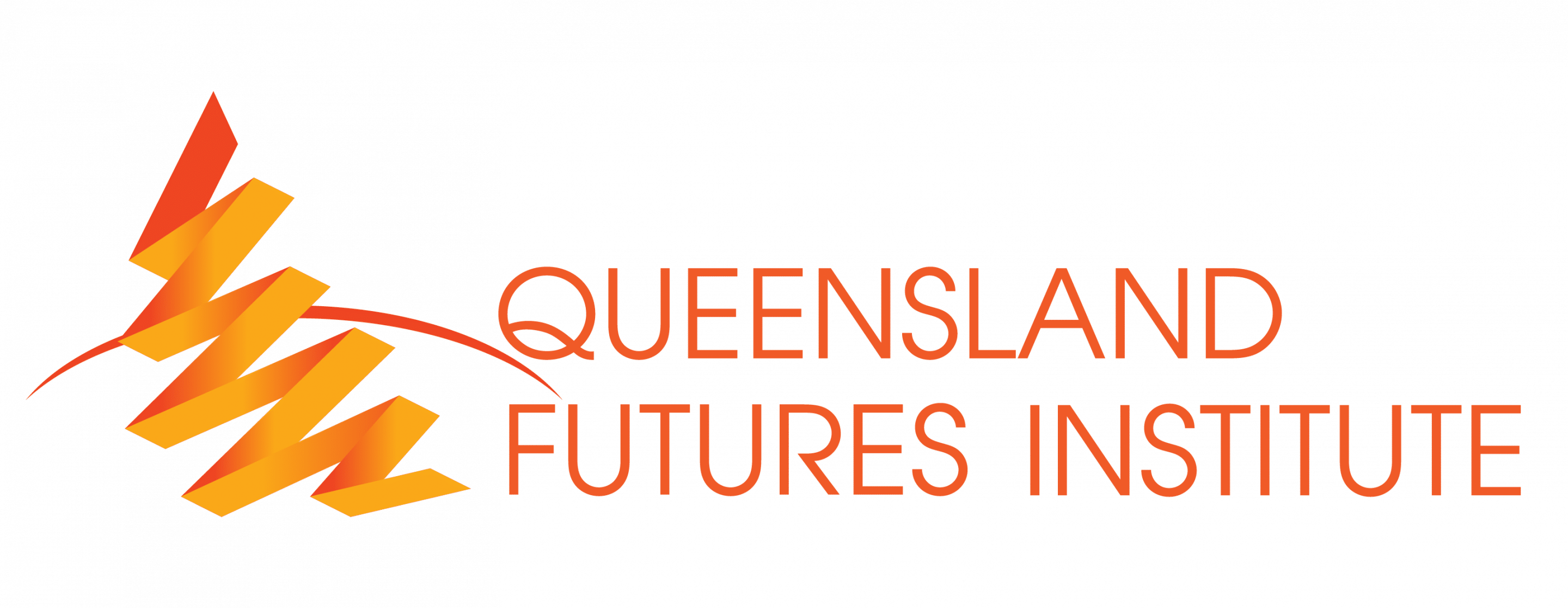|

|
Professor Carolyn Evans
- The university sector has faced challenges due to the impact of visa policies and the decline in international student numbers, which has been felt most by suburban and regional universities and have ongoing consequences for universities’ capacity to deliver key initiatives.
- In Queensland, the buoyant jobs market has led many students to leave school early and enter the workforce. While this can benefit individuals and the economy in the short term, it may present long-term challenges for the state. There is enormous opportunity where industry and education work together to deliver better outcomes for students and the broader economy. This is true throughout education, training and research.
- Firstly, traditional education can be enhanced through industry partnerships. Working
with industry ensures the delivery of relevant skills, particularly in sectors like health
and education. This leads to outcomes where students can contribute to innovative
engagements which benefit both students as well as industry and organisations.
- For example, Griffith students have worked with Gilmore Space developing satellites, Logan City Council in proactive footpath maintenance initiatives, and Seaworld - co-developing intellectually stimulating puzzles for dolphins.
- Secondly, universities play a role in reskilling and upskilling of employees within industry throughout their careers and business needs evolve. For example, Griffith has worked with Commonwealth Bank, experts, regulators and the Australian Federal Police on programs addressing financial fraud and crime. This training is delivered through executive education and can then be developed through student programs.
- Finally, universities have a role in translating research into impact to drive economic and social prosperity. For example, Griffith University has developed a vaccine for Strep A over decades; now, with commercial potential emerging, we are partnering with pharmaceutical companies to deliver this vaccine, improve health outcomes and boost
Queensland’s economic prosperity.
- At the end of the day, job outcomes matter - for students and for industry. While there are many hurdles for the sector, there is also a tremendous opportunity to grow and innovate together with industry.
|

|
Professor Helen Bartlett
- The University of the Sunshine Coast is still relatively young, approaching its 30th anniversary next year. It has been rapidly growing, doubling its size over the last 10 years, with similar growth anticipated in the next decade, supported significantly by population growth in regions.
- However, this rapid growth brings several challenges. There is significant uncertainty in the higher education sector due to the government-led Accord review process, especially concerning universities’ funding model. It could take another two or three years before recommendations and any changes to the funding model are clarified, making annual planning challenging.
- Unlike TAFE, which is state-funded, our funding comes from the Commonwealth, exacerbating the uncertainty.
- Like many industries, skill shortages are another major issue, particularly in specialist IT and technology roles. This is a challenge in urban as well as regional areas.
- Despite these challenges, there are many opportunities for USC’s future and our community-driven mission. To take advantage of these opportunities, USC must be a part of a broader educational ecosystem. This harmonisation with TAFE, for example, has been a focus for the Accord process.
- However, although we are working collaboratively with TAFE and schools, the current regulatory framework and funding model prevent seamless integration.
- Until the funding model is addressed, only piecemeal changes are achievable.
- There’s an important role for the Queensland Government to facilitate meaningful collaboration across universities, TAFE and schools, driving economic growth.
|
|

|
Brent Kinnane
- TAFE Queensland is 142 years old, supporting 130,000 students annually across 60 campuses statewide and online, making us a significant contributor to Queensland’s educational economy.
- Like universities, funding stability remains a critical challenge, hindering our ability to commit to long-term partnerships with universities and industry when funding sources change regularly.
- Our strategic focus for the future is to continue to establish genuine and mutually beneficial long-term training partnerships with industry. A notable example is our partnership with the BHP Mitsubishi Alliance and CQUniversity through the Queensland Future Skills Partnership, focused on delivering long-term community benefits and investing substantially in skills development. Strong collaborative partnerships between education providers and industry partners will set the standard for successful workforce development for the future.
- Finding the right people to support an organisation is highly beneficial for any business. For TAFE Queensland, industry professionals are among the best educators, bringing industry-current practical skills and knowledge to our students.
- Unlocking opportunities to bridge industry expertise with educational programs therefore represents a significant opportunity.
|

|
Chris Mountford
- We have about 230 independent schools across Queensland, educating around 17% of school-aged children, rising to approximately 25% in years 11 and 12.
- We pride ourselves on bringing choice and diversity into education, with schools ranging from long-established grammar schools, faith-based schools, schools for students with disabilities, small and large schools, and everything in between.
- Our sector has seen phenomenal enrolment growth of about 4% compound annual growth, particularly over the past four to five years, which is exceptionally strong compared to historical trends.
- This rapid growth has resulted in many schools reaching full capacity and maintaining lengthy waitlists. For example, one sector leader which oversees 11 schools has a combined waitlist of 4,000 students.
- While this growth presents opportunities, a significant challenge for us is how to service this increasing demand going forward. If we want to ensure families continue to have educational choice in 10, 15 or 25 years, we must figure out how to build more schools.
- Queensland is expected to have an additional 100,000 school-aged children over the next 20 years, and we need new schools to accommodate this growth.
- The cost of land and construction is a major barrier. Currently, building a school for around 1,000-1,200 K-12 students costs approximately $100-150 million.
- Another key challenge is ensuring schools have quality staff to deliver education effectively. Maintaining school diversity inherently requires expanding our workforce and resources. We’re addressing workforce needs and teacher shortages, but enabling strong school leadership is particularly challenging in the current environment.
- Broader societal issues are increasingly affecting schooling. For example, rising instances of school refusal, social media and online bullying present ongoing challenges beyond school grounds but significantly impact students.
- Housing stress also contributes to educational disengagement, with hundreds of Brisbane
families sleeping rough, which is an unstable foundation for children’s education.
- Reflecting this issue, specialist assistance schools catered to disengaged students have quadrupled enrolments over the past five years. The rapid growth of this student cohort highlights the need for urgent attention.
|
|
The University Accord aims to lift tertiary attainment from 60% to 80% by 2050, highlighting the need
for greater collaboration across K–12, TAFE, and higher education. What future initiatives do you see
fostering this alignment, and how will they benefit employers and industry?
|

|
Professor Helen Bartlett
- We’re already engaged in several initiatives, but to reach the national Accord targets, we must enable greater university access for students from equity groups.
- At USC, 66% of our students come from equity groups, including students who are firstin-family, from lower socioeconomic and regional areas, and students with disabilities.
- Future initiatives will involve greater collaboration across the education sector. For example, school students may increasingly take TAFE microcredentials (e.g. in AI) and university units (such as through our Head Start program), earning credits towards future degrees.
- This will see the boundaries between education sectors blur as we move towards a lifelong skilling approach.
- To enable this, a national skills passport is currently being considered. This would standardise qualification terminology and assist employers to clearly understand skills regardless of the education pathway.
- Another opportunity is the co-location of different education sectors. For example, at our Moreton Bay campus at Petrie, now in its fifth year with 5,500 students, we anticipate soon having a TAFE campus nearby. This would enable collaborative opportunities such as advanced manufacturing, shared facilities and co-created educational programs.
- This year, USC is launching a new degree in partnership with Aviation Australia, focused on aircraft maintenance. This is a strong example of effective collaboration with the VET sector to address a critical skills shortage.
|
Given TAFE Queensland’s statewide presence, what current and future initiatives are you leading to
strengthen collaboration across the broader education sector?
|
|

|
Brent Kinnane
- TAFE Queensland is one of the few providers with opportunities across the entire spectrum of the education sector, operating a Year 11 and 12 school at Alex Hills, and offering VET qualifications and bachelor’s degree programs.
- Other current initiatives include a TAFE Centre of Excellence for our Health Care and Support, and Clean Energy Batteries sectors. These Centres aren’t just physical spaces but a network of collaborations involving universities, TAFEs, private RTOs and schools to determine the best curriculum delivery and student opportunities.
- These centres also enable a significant research component. Within two to three weeks, we expect to finalise funding agreements to support research into accessible delivery models, culturally appropriate training, trainer retention and growth and digital literacy. This initiative offers strong collaboration opportunities with universities, leveraging their extensive research expertise, which benefits the entire education sector.
- Another major initiative we are launching is a partnership with the AI Group Centre for Education and Training and USQ to create a higher-level apprenticeship program that offers a dual electrical qualification.
- The pathway commences with a regular electrical apprenticeship, that includes the Certificate III in Electrotechnology Electrician and leads to an Electrical Mechanic licence, with a Bachelor of Engineering Technology.
- With our new initiative (currently pending TEQSA approval), students can complete both qualifications within six years instead of eight, significantly accelerating their readiness to enter industry and contribute to our state’s economy.
|
|
What trends are you seeing in the K-12 sector and, and how you link in with the vocational and higher
education sectors?
|

|
Chris Mountford
- The co-location of schools with other educational providers is an important piece of the puzzle.
- Given the breadth of our sector, there are already numerous relationships between our schools, universities, and VET providers, with a particularly strong uptake of VET programs.
- While the job-ready aspect of education is often emphasised, we must not forget about the broader educational journey. For example, from Prep through to employment, education ensures young people gain foundational and broad-based skills, and allows students to explore their passions, strengths, and eventually identify suitable career paths.
- It is important to understand how students transition from K-12 to other education sectors, and the drivers behind this.
- A current conversation among our schools involves implications of the recent transition to the ATAR model for university entrance. The implementation of the ATAR system has been highly successful in its delivery. However, after a few years, we’re now seeing the implications of this transition, particularly around how ATAR influences subject selection in Years 11 and 12. There’s concern that this might narrow the focus of student choices based on achieving a specific ATAR outcome.
- Over the next few years, we’ll focus on unpacking these implications, ensuring smoother transitions, and delivering outcomes that benefit all students.
|













